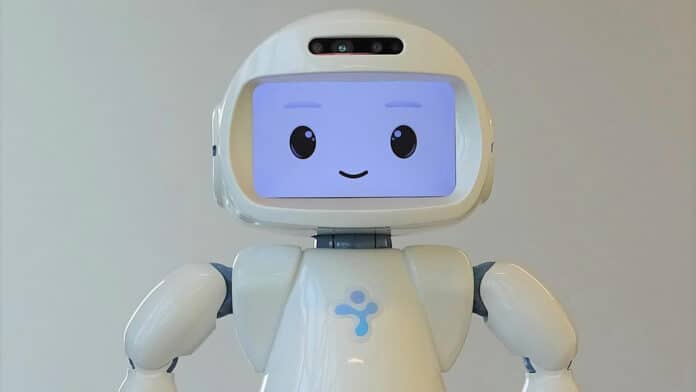Students with learning disabilities (LD) have difficulty acquiring basic skills or academic content like reading, writing, spelling, thinking, speaking, listening, or doing mathematics. They often require supplementary learning support, such as one-to-one instruction, to address academic skill gaps.
Now, engineering researchers at the University of Waterloo are successfully using a cute little robot to help keep children with learning disabilities focused on their work.
Researchers have studied the impact of using a social robot as an educational tool for instructors to support students with learning disabilities. They found both the youngsters and their instructors valued the positive classroom contributions made by the robot.
“There is definitely a great potential for using robots in the public education system,” said Dr. Kerstin Dautenhahn, a professor of electrical and computer engineering. “Overall, the findings imply that the robot has a positive effect on students.”
Students with learning disabilities may benefit from additional learning support, such as individualized learning and the use of smartphones and tablets. In recent years, educators explored the use of social robots to help students learn, but more often, their research has focused on children with autism spectrum disorders. Few studies have been undertaken on the use of socially assistive robots for students with learning disabilities.
Two engineering researchers from Waterloo University in Ontario, Canada, and two experts from the Learning Disabilities Society in Vancouver, Dautenhahn, decided to change this, conducting a series of tests with a small humanoid robot called QT. The robot’s ability to perform gestures using its head and hands, accompanied by its speech and facial features, makes it very suitable for use with children with learning disabilities, researchers say.
Building on earlier research, the team divided 16 students with learning disabilities into two groups. In one group, students worked one-on-one with an instructor only, and in the other group, the students worked one-on-one with an instructor and a QT robot.
In the second group, the instructor used a tablet to direct the robot, which then autonomously performed various activities using its speech and gestures. While the instructor controlled the sessions, the robot took over at certain times, triggered by the instructor, to lead the student.
In addition to introducing the session, the robot set goals and provided self-regulating strategies, if necessary. If the learning process was getting off-track, the robot used strategies such as games, riddles, jokes, breathing exercises, and physical movements to bring the student back to the task.
Students who worked with the robot, Dautenhahn said, “were generally more engaged with their tasks and could complete their tasks at a higher rate compared” to the students who weren’t assisted by a robot. Further studies using the robot are planned to further investigate the utility of robot-assisted learning for children with learning disabilities.
Journal reference:
- Negin Azizi, Shruti Chandra, Mike Gray, Jennifer Fane, Melissa Sager and Kerstin Dautenhahn. User Evaluation of Social Robots as a Tool in One-to-One Instructional Settings for Students with Learning Disabilities. Social Robotics, 2023; DOI: 10.1007/978-3-031-24670-8_14
